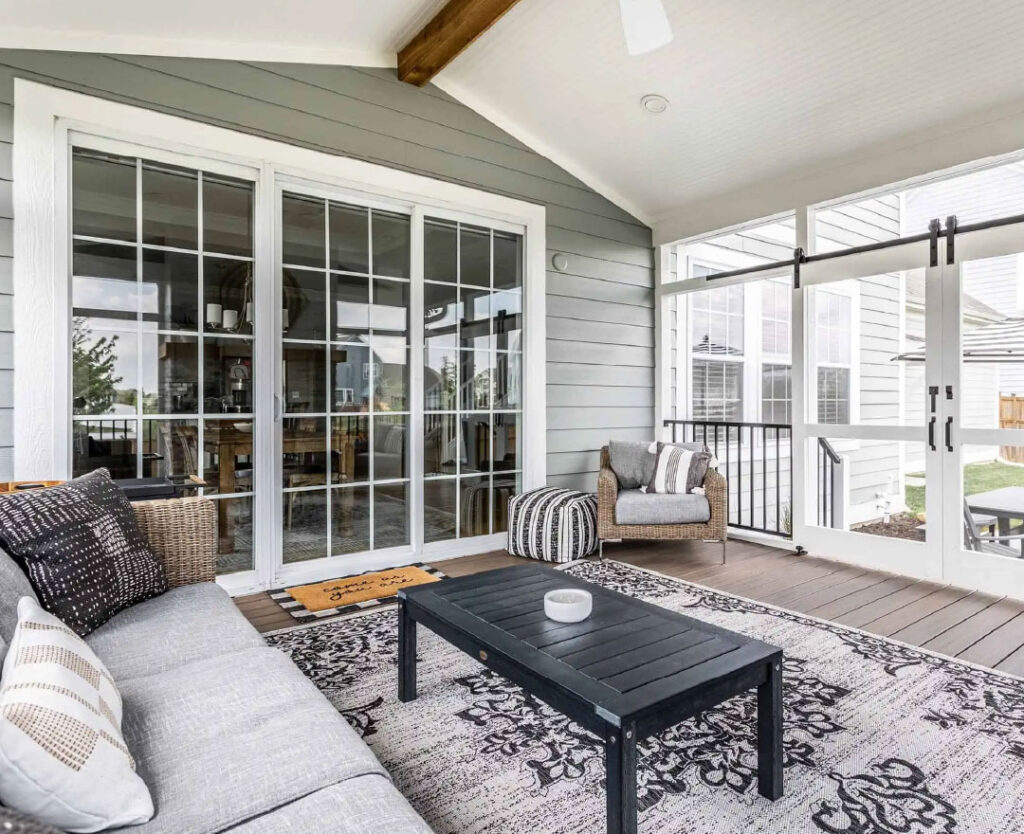You invested in a four-seasons room for a reason: to enjoy the view and natural light no matter the weather. But let’s be honest—these glass-filled spaces can be tricky to climate control. Without a dedicated system, they can turn into a sweltering greenhouse in the summer and a frosty freezer in the winter. Heating and cooling four seasons rooms shouldn’t be a huge endeavor.
The good news? You don’t have to settle for a room that’s only comfortable for two seasons. With the right heating and cooling solution, you can transform your sunroom into the cozy, climate-controlled retreat it was meant to be, all year long. The key is finding a system designed for a space with a high thermal load, often requiring more powerful or specialized heating and cooling than a standard room in your house.

1. The All-Star: Ductless Mini-Split Systems
- What it is: A highly efficient, two-part system with an outdoor compressor and an indoor air-handling unit mounted on a wall, floor, or ceiling. It provides both heating (via a heat pump) and cooling.
- Why it’s great: Mini-splits are widely considered the best solution for sunrooms. They offer zoned comfort, meaning you can control the temperature in the sunroom independently of the main house. They are incredibly energy-efficient, require no bulky ductwork, and are much quieter than most other standalone units. Many modern versions are “hyper-heating” and work even in extremely cold climates.
If you think you may be interested in a ductless mini split system, installation is fairly easy. Click here to contact us about getting a free estimate set up.
2. Simple and Versatile: Portable & Window Units
- What it is: Cost-effective, temporary solutions like window air conditioners, portable AC units, or electric space heaters.
- Why it’s great: These are the most affordable and easiest options to install. A window AC unit provides excellent cooling and dehumidification, and a space heater can quickly take the chill out of a smaller space.
- Things to consider: These are often best for rooms you only use occasionally. They are less visually appealing, can be noisy, and portable heaters and ACs may not have the capacity to heat or cool a large, glass-heavy room effectively during extreme weather.
3. Integrated Comfort: Extending Existing HVAC Ductwork
- What it is: Connecting your four-seasons room to your home’s central heating and cooling system by running new ductwork into the space.
- Why it’s great: It provides seamless, whole-house comfort and control.
- Things to consider: This can be a major undertaking and may require cutting into walls or floors. More importantly, your existing HVAC system may not have the capacity to handle the extra load of the sunroom, which often has a much greater demand for heating and cooling than a standard room. Consult an HVAC professional before going this route.
4. Focused Heating: Electric Baseboard and Radiant Floors
- What it is: Dedicated heating solutions that don’t include cooling. Electric baseboard heaters are easy to install along the perimeter, and radiant floor heating is installed beneath the flooring.
- Why it’s great: Baseboard heat provides a reliable, easy-to-install zone of heat. Radiant floor heating is the ultimate in luxury, warming the room from the ground up for superior comfort.
- Things to consider: You will need a separate cooling solution for the summer months. Radiant floor heating is often best installed during a new build or a major renovation.
